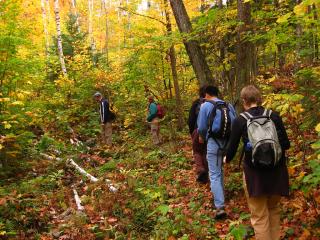
Several times this blog has discussed whether climate change is making nuclear power a more acceptable option (1, 2, 3). One element of the debate that bears consideration is the legacy of contamination at sites that form part of the nuclear fuel cycle: from uranium mines to post-reactor fuel processing facilities. The Rocky Flats Plant in the United States is an especially sobering example.
Insiders at the plant started “tipping” the FBI about the unsafe conditions sometime in 1988. Late that year the FBI started clandestinely flying light aircraft over the area and noticed that the incinerator was apparently being used late into the night. After several months of collecting evidence both from workers and by direct measurement, they informed the DOE on June 6, 1989 that they wanted to meet about a potential terrorist threat. When the DOE officers arrived, they were served with papers. Simultaneously, the FBI raided the facilities and ordered everyone out. They found numerous violations of federal anti-pollution laws including massive contamination of water and soil, though none of the original charges that led to the raid were substantiated.
In 1992, Rockwell was charged with minor environmental crimes and paid an $18.5 million fine.
Accidents and contamination have been a feature of facilities handling nuclear materials worldwide. Of course, this does not suffice to show that nuclear energy is a bad option. Coal mines certainly produce more than their share of industrial accidents and environmental contamination.
The trickiest thing, when it comes to evaluating the viability of nuclear power, is disentangling exactly what sort of governmental subsidies do, have, and will exist. These subsidies are both direct (paid straight to operators) and more indirect (soft loans for construction, funding for research and development). They also include guarantees that the nuclear industry is only responsible for a set amount of money in the result of a catastrophic accident, as well as the implicit cost that any contamination that corporations cannot be legally forced to correct after the fact will either fester or be fixed at taxpayer expense. Plenty of sources claim to have a comprehensive reckoning of these costs and risks, but the various analyses seem to be both contradictory and self-serving.
Before states make comprehensive plans to embrace or reject nuclear power as a climate change mitigation option, some kind of extensive, comprehensive, and impartial study of the caliber of the Stern Review would be wise.





